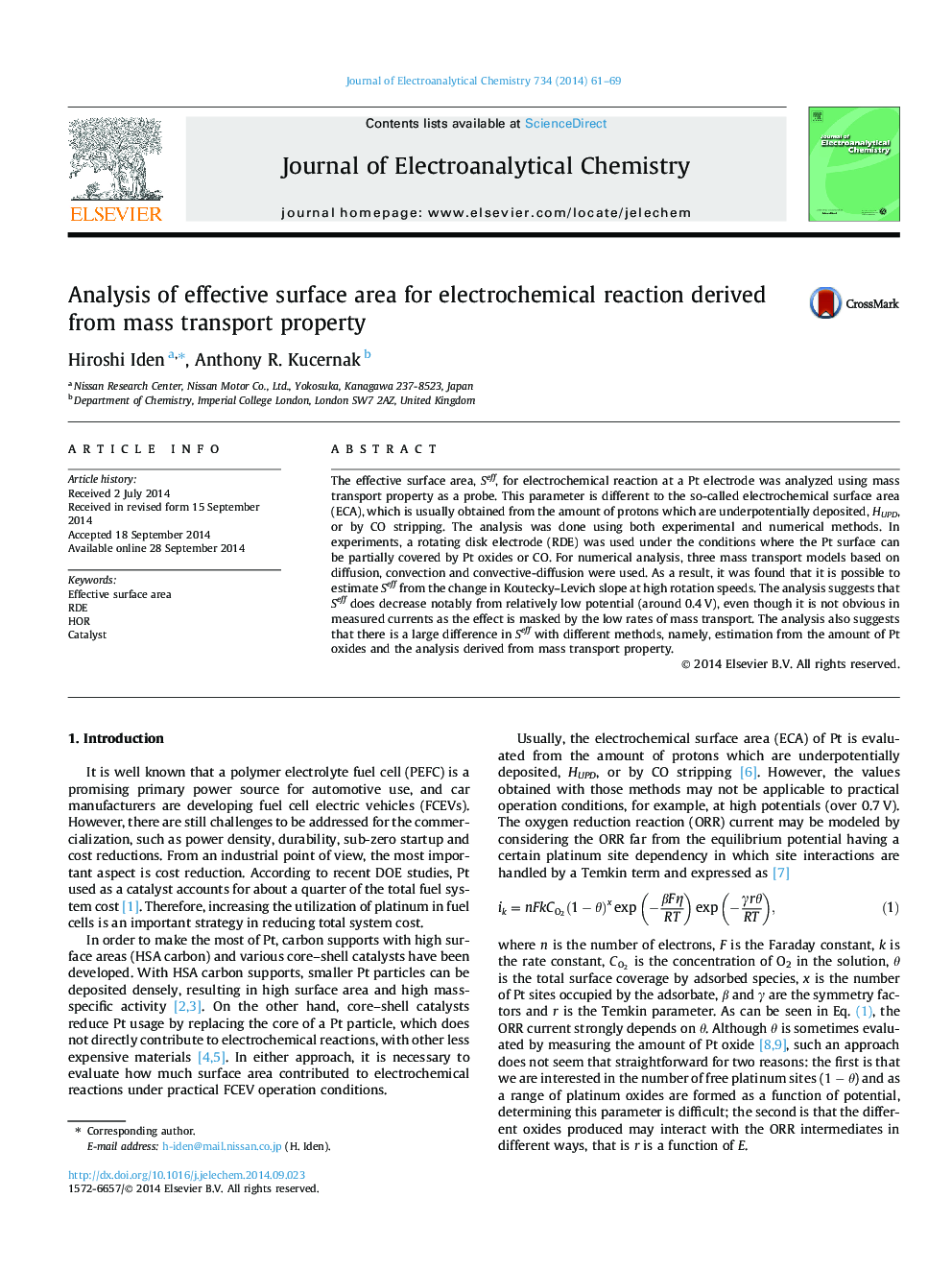| Article ID | Journal | Published Year | Pages | File Type |
|---|---|---|---|---|
| 218637 | Journal of Electroanalytical Chemistry | 2014 | 9 Pages |
•Estimation of effective surface area was possible by analyzing mass transport.•Inactive domain size could also be estimated from the analysis.•Effectiveness decreased notably from relatively low potential unlike Pt oxide growth.
The effective surface area, Seff, for electrochemical reaction at a Pt electrode was analyzed using mass transport property as a probe. This parameter is different to the so-called electrochemical surface area (ECA), which is usually obtained from the amount of protons which are underpotentially deposited, HUPD, or by CO stripping. The analysis was done using both experimental and numerical methods. In experiments, a rotating disk electrode (RDE) was used under the conditions where the Pt surface can be partially covered by Pt oxides or CO. For numerical analysis, three mass transport models based on diffusion, convection and convective-diffusion were used. As a result, it was found that it is possible to estimate Seff from the change in Koutecky–Levich slope at high rotation speeds. The analysis suggests that Seff does decrease notably from relatively low potential (around 0.4 V), even though it is not obvious in measured currents as the effect is masked by the low rates of mass transport. The analysis also suggests that there is a large difference in Seff with different methods, namely, estimation from the amount of Pt oxides and the analysis derived from mass transport property.
